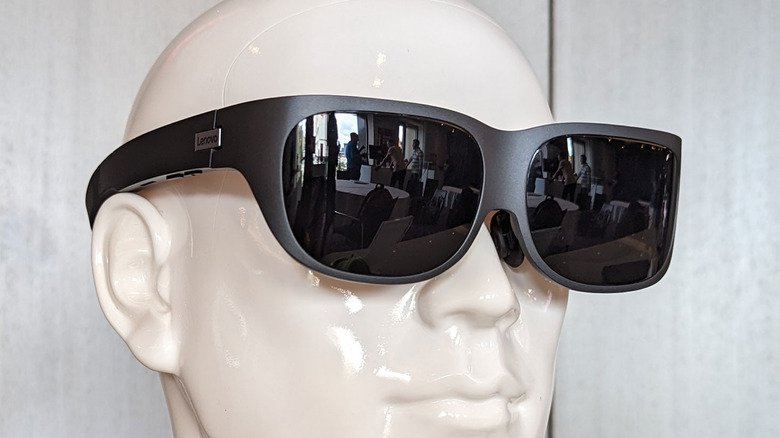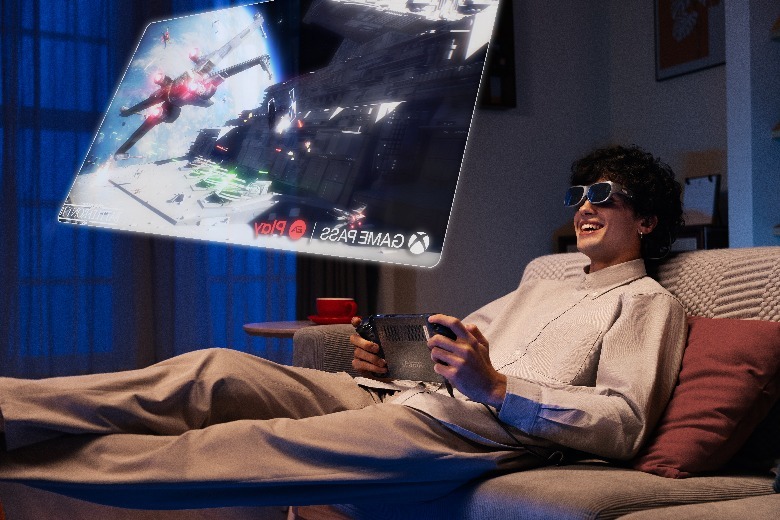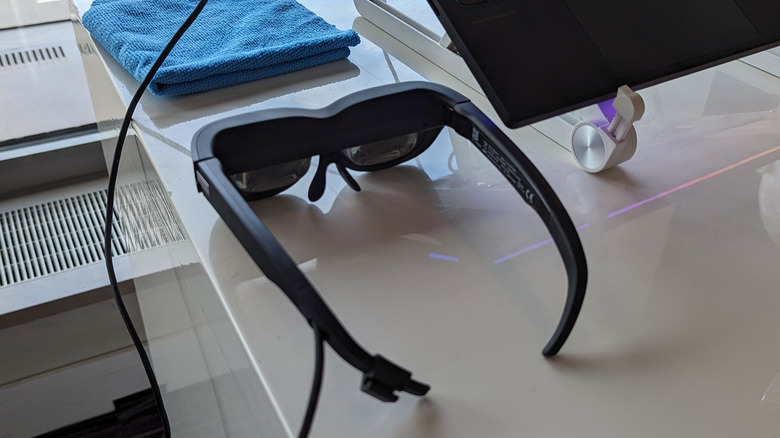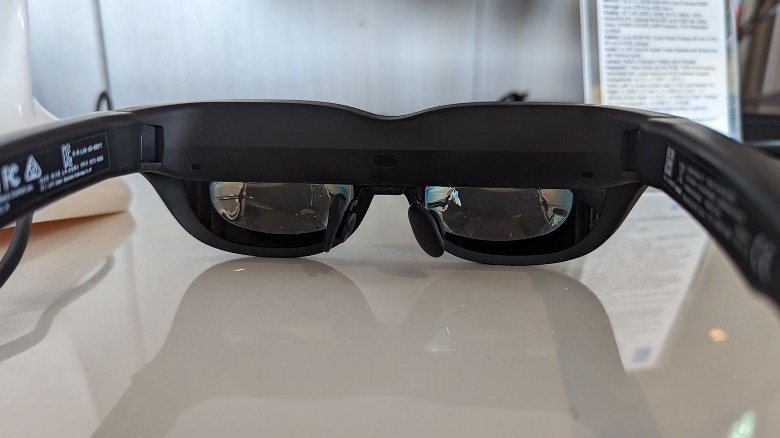Lenovo Legion Glasses Skip AR In Favor Of Portable Big Screen Gaming
Lenovo is no stranger to XR hardware, but with its latest pair of smart glasses, the company is gunning for a portable monitor that you can wear and dive right into immersive gaming. Launched alongside the Legion Go handheld gaming console, the Legion Glasses plug into that handheld via a USB Type-C port and instantly offer a larger canvas for playing games without having to worry about battery hassles.
Lenovo fittingly classifies them as "an advanced wearable virtual monitor," one that plays well not only with the Legion Go but also with Android, Windows, and macOS machines equipped with a USB Type-C port. And to make up for the lack of AR or VR tricks, the company is focusing on the visual clarity aspect.
The centerpieces are micro-LED display units, with each one offering the equivalent of full-HD resolution per eye. The stem area also fits speaker units, so users don't have to fiddle with pesky wires or the extra aural load from headphones or earbuds. This isn't the first time Lenovo has pulled off the monitor-on-your-face stunt, and neither is it the only wolf in the jungle.
Just about a year ago, it launched the Lenovo Glasses T1, which also put a full-HD OLED display in front of your eyes to assist with computing duties. TCL's NxtWear S and Air also put the equivalent of a 100+ inch screen in front of a person's optic sockets. The Nreal Air promises a similar screen nirvana, and so do the Viture One XR Glasses.
A monitor in shades
The Legion Glasses essentially replicate the experience of a large screen hidden behind a pair of lenses, and despite the Legion branding, they aren't targeted at hardcore gamers. The pitfall here is that the screen refresh rate is locked to 60Hz. Lenovo appears to have made a conscious choice here, as the Legion Go itself won't be able to crack past the 60fps mark while playing the current wave of demanding AAA titles.
Another consideration here is that the Legion Glasses are also targeted at content consumption. You don't really need a 90Hz or a higher refresh rate screen to enjoy a movie on Netflix or a YouTube video — 60fps videos are plenty smooth, and anything above it just seems overkill. However, if you had dreams of plugging in the glasses with a high-end gaming PC, 60fps is where you hit the peak.
Lenovo is banking more on the plug-and-play appeal of the Legion Glasses as a "portable, private, large screen viewing experience" and not necessarily shattering any visual quality or performance benchmarks. To ensure maximum comfort for everyone, Lenovo has left the doors open for prescription lens inserts. The box comes with a prescription lens frame, carrying case, adjustable nose pads, cleaning cloth, and an anti-slip adapter. As for the hit on buyers' wallets, the Legion Glasses will be up for grabs at $329 and arrive in October.



